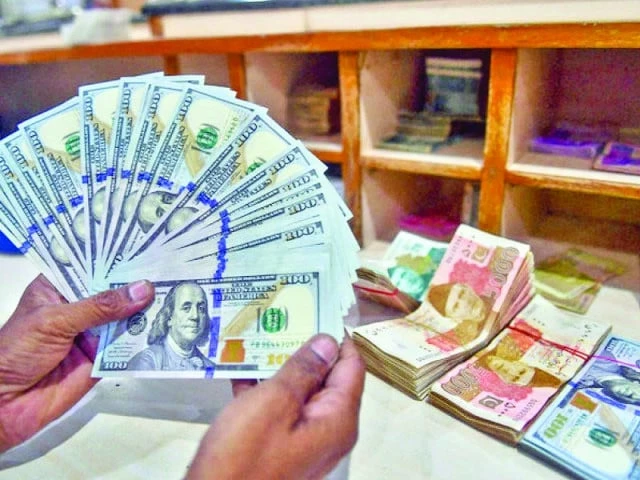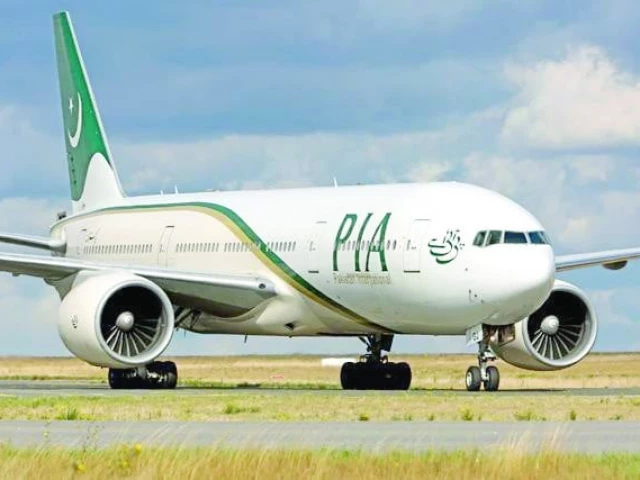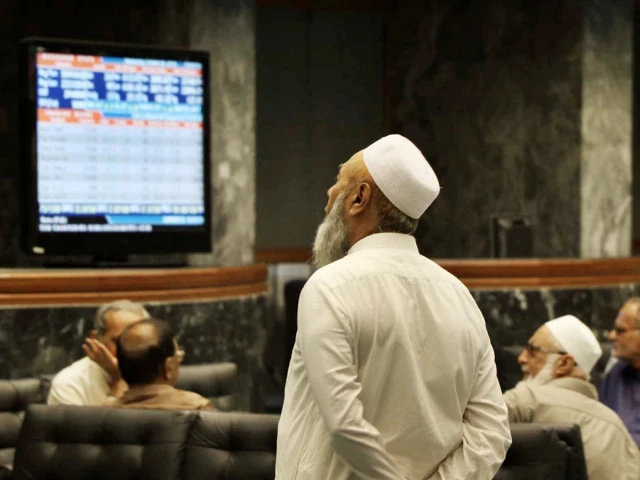Business
Iqbal unveils $3tr economic vision | The Express Tribune

LAHORE:
Federal Minister for Planning and Development Ahsan Iqbal said on Saturday that the defence agreement between Pakistan and Saudi Arabia was an important milestone, warmly welcomed across society, but stressed that lasting national security depended on economic strength.
Speaking to the media after chairing the first meeting of Members of the Federation of Engineering Institutions of Pakistan, he said Pakistan gained more recognition and respect globally after the Marka-e-Haq (battle of truth). “We have to move forward keeping in mind future plans and challenges,” he said.
He noted that CPEC Phase-II was formally launched during Prime Minister Shehbaz Sharif’s recent visit to China. The next JCC meeting is scheduled for September 26 in Beijing, which he will attend. The minister said defence success could not last unless supported by a strong economy. “I believe the success of the Udaan Pakistan Project depends on the cooperation and role of engineers,” he remarked.
He stressed that Pakistan’s exports would rise through innovative production, industrial capacity, and modern technology. A stronger export economy, he said, required robust infrastructure, and engineers must deliver it. He added that engineers also played a central role in building a technology-based economy under e-Pakistan and in ensuring water and food security. He hoped the Federation of Engineers would play a vital role in climate action. Iqbal said Pakistan could not reverse climate change but could build resilience by reconstructing stronger infrastructure. “Hydraulic studies should be done to see how Pakistan’s water flows work and how floods can be avoided,” he suggested.
He linked high energy costs to circular debt created by inefficiencies and leakages. Engineers, he said, could fix these problems and help close a financial black hole consuming billions of rupees. “We can spend this money on education, health, and infrastructure in underdeveloped areas,” he argued.
Highlighting the global reliance on technology, he said engineers made it useful for human development. The planning ministry, he assured, would act as a bridge between government and the engineering profession. He invited skilled professionals at home and abroad to join Udaan Pakistan, a programme aligned with the aspirations of 240 million people.
He outlined two economic goals: to reach a $1 trillion economy by 2035 and $3 trillion by 2047. Pakistan’s young population, nearly 60% of the total, was central to economic planning. A national convention would soon be held with universities to launch the Pakistan 2047 Lab, he said. “Where Pakistan will be in 2047 should be identified by the young generation in whose hands the country will run,” he added. The Lab, part of Udaan Pakistan, would be inaugurated soon, with young professionals taking lead responsibility.
Referring to his recent visit to China, Iqbal said the private sector had signed agreements worth $8.5 billion, as 1,000 Pakistani and Chinese businesses had committed to joint ventures. “But if we do not provide a favourable environment, these investments will not produce results. If we allow chaos and unrest, which investor will come to Pakistan?” he warned.
He welcomed institutional unity in supporting national security and stability, saying economic development required peace. “It is equally important that we do not allow anyone to create chaos and uncertainty so that the seeds of development being sown can grow, bear fruit, and build a better future for the people of Pakistan,” he said.
Congratulating the engineering community on forming the Federation of Pakistani Engineering Institutions, Iqbal hoped it would become the country’s most powerful think tank. He said it could guide the government on development challenges by harnessing engineering manpower and talent.
The meeting was attended by a large number of engineers from across the country, including Engineer Amir Zameer Ahmed Khan, Engineer Muhammad Usman Farooq, Engineer Tahir Basharat Cheema, Engineer Sarosh Hashmat Lodhi, and Engineer Qasim Qureshi.
Business
What are the ‘hidden charges’ on forex transactions: RBI issues draft rules on charges; what could change? – The Times of India

The Reserve Bank of India (RBI) has issued a draft proposal aimed at making cross-border payments more transparent and consumer-friendly. With this, the bank aims to address long-standing complaints about hidden charges and unclear pricing in foreign exchange transactions.A large number of individuals face difficulties while making overseas payments for education, living expenses, travel, investments or remittances, mainly due to complex processes and high service costs.In many cases, customers only discover the true cost of a transaction after it has been completed. This includes charges such as fees, margins and intermediary costs that are either bundled into exchange rates or deducted later without a clear explanation.To address these issues, the RBI has proposed new regulations that would require banks and other authorised dealers to disclose the total cost of foreign exchange transactions upfront, before a customer agrees to the deal. The move is intended to help customers compare charges across service providers and make more informed decisions, according to ET.
What the RBI has proposed
Under the draft circular, authorised dealers such as commercial banks and certain financial institutions will be required to clearly communicate all transaction-related costs in advance. This includes commonly used foreign exchange transactions such as:
- Foreign exchange cash (T+0): Same-day currency exchange
- Tom (T+1): Settlement on the next business day
- Spot (T+2): Settlement within two business days
The disclosure requirement will cover both foreign exchange transactions and related derivative contracts used by retail customers.The RBI observed that a similar step was taken in January 2024, when authorised dealers were mandated to disclose mid-market rates for forex and foreign currency interest rate derivatives. The new proposal builds on a similar framework by extending transparency to the full cost structure of transactions.What counts as “total transaction cost”Before entering into a foreign exchange transaction, authorised dealers will now have to provide a complete breakdown of costs. According to Hemal Shah, Partner and Leader – Treasury and Commodity Advisory, Risk Consulting, EY India, this would include:
- The foreign exchange rate applied
- Currency conversion charges
- Sending or outward remittance fees
- Receiving fees, if applicable
- Charges levied by intermediary or correspondent banks
- Any other fee linked to executing the transaction
Importantly, these details must not only be shared upfront but also included in the final deal confirmation, allowing customers to verify what they were quoted against what they were ultimately charged.Once finalised, the instructions will be applicable within three months from the date of issuance.
Problems faced by retail users
Retail customers have long flagged that international transfers feel far more expensive and opaque than domestic payments. Often, customers are shown only an exchange rate, while additional costs such as remittance fees, FX margins, SWIFT charges and intermediary bank deductions are revealed only later.Experts point out that banks frequently embed margins and multiple fees into a single quoted rate, making it difficult for customers to understand the actual pricing. Charges on the recipient side, such as correspondent bank fees or instances where beneficiaries bear costs instead of remitters, have also added to confusion, particularly for exporters.Another major concern is the lack of transparency around correspondent bank fees, which can vary significantly depending on routing and overseas banking arrangements. While banks often describe these as outside their control, the RBI has flagged this as a key area where disclosure standards need improvement.
How customers will benefit
By mandating upfront disclosure, the RBI aims to give retail users a clearer picture of the true cost of cross-border transactions. This will help customers better understand pricing mechanisms, dealer margins, and the differences between various forex products.“Enhanced visibility on the hidden charges allows retail users to make better decisions on the pricing offered by ADs,” said Shah.Vijay Mani, Partner and Banking and Capital Markets Leader at Deloitte India, added that the move can significantly improve trust and comparability, provided the disclosures are implemented in a clear and customer-friendly manner.The RBI has invited public comments on the draft circular. Feedback can be submitted until January 9, 2026, after which the central bank will review responses before issuing final guidelines.
Who do the rules apply to?
Authorised Dealers under RBI regulations include Authorised Dealer Category-I banks and Standalone Primary Dealers authorised under Category-III to conduct foreign exchange transactions.Customers are classified as retail or non-retail for the purpose of these rules. Non-retail users include large financial institutions, NBFCs, insurance companies, mutual funds, alternative investment funds and Indian entities with a net worth of Rs 500 crore or more or a turnover of Rs 1,000 crore or more. Non-residents, other than individuals, are also treated as non-retail users.Any customer who does not fall into these categories is considered a retail user and will directly benefit from the proposed transparency measures.
Business
Will Budget 2026 Bring Back Train Ticket Discounts For Senior Citizens?

Last Updated:
As Budget 2026 approaches, elderly passengers are hopeful that a long-withheld relief might finally return.
Stay Ahead, Read Faster
Scan the QR code to download the News18 app and enjoy a seamless news experience anytime, anywhere.


Indian Railways is set to increase train fares from December 26, and this has once again put the spotlight on senior citizens. As Budget 2026 approaches, elderly passengers are hopeful that a long-withheld relief might finally return.
Business
PIA to be run by Arif Habib-led consortium by April 2026 | The Express Tribune

The national flag carrier, Pakistan International Airlines (PIA), is expected to be run by a new owner from April 2026. It will also receive fresh capital under a deal to privatise the airline, the country’s privatisation chief said on Wednesday.
A consortium headed by the Arif Habib Corporation emerged as the top bidder on Tuesday, in a live-televised auction for a 75% stake in PIA. This marks a breakthrough for the government’s long-delayed privatisation of the carrier.
The consortium offered Rs135 billion, surpassing the government’s reserve price of Rs100 billion – a turnaround from last year’s failed sale attempt.
Read: Govt finally cuts loose ‘white elephant’ PIA
Adviser to the Prime Minister on Privatisation, Muhammad Ali, told Reuters in an online interview that the state expects a new owner to be running the airline by April next year. The process moves to final approvals by the Privatisation Commission board and cabinet, expected within days, with contract signing likely within two weeks.
Financial close is also expected after 90 days to meet regulatory and legal conditions.
Ali said the government would receive Rs10 billion, in cash, upfront, retaining a 25% stake valued at around Rs45 billion. The deal was structured to inject fresh capital into the airline rather than simply transfer ownership, he said.
“We did not want a situation where the government sells the airline, takes its money, and the company still collapses,” Ali said. The winning consortium also comprises fertiliser maker Fatima, private school network City School and real estate firm Lake City Holdings Limited.
Ali said Fauji Fertiliser Company, a military-run conglomerate, did not bid but could still join the winning consortium as a partner, noting the buyer can add up to two partners – including a consortium partner or a foreign airline – if they meet the qualifying criteria.
Allowing partners adds financial strength and could bring global aviation expertise, he said.
IMF pressure
Ali said safeguards, including retained earnest money and an additional payment on signing, would allow the government to move to the second-highest bidder if the deal fails to close.
On labour, he said the buyer must retain all employees for 12 months after the transaction, with contracts unchanged, adding that the PIA workforce has already shrunk in recent years.
The sale is closely watched by the International Monetary Fund (IMF), which has pressed Pakistan to halt losses at state-owned enterprises. Ali termed the privatisation a key test of Pakistan’s reform credibility with the IMF, adding that failure to offload loss-making state firms risked renewed pressure on public finances.
He said closing the deal would signal momentum on reforms and privatisations, adding that the government was working through a pipeline of future transactions once PIA closes.
-

 Fashion6 days ago
Fashion6 days agoIndonesia’s thrift surge fuels waste and textile industry woes
-

 Business6 days ago
Business6 days agoBP names new boss as current CEO leaves after less than two years
-

 Sports1 week ago
Sports1 week agoJets defensive lineman rips NFL officials after ejection vs Jaguars
-

 Tech6 days ago
Tech6 days agoT-Mobile Business Internet and Phone Deals
-

 Sports6 days ago
Sports6 days agoPKF summons meeting after Pakistani player represents India in kabaddi tournament
-

 Entertainment1 week ago
Entertainment1 week agoPrince Harry, Meghan Markle’s 2025 Christmas card: A shift in strategy
-

 Entertainment6 days ago
Entertainment6 days agoIndia streamlines visa rules in boost for Chinese professionals
-

 Sports6 days ago
Sports6 days agoUWCL grades for all 18 teams: Leuven get A+; Barça an A-, PSG fail













